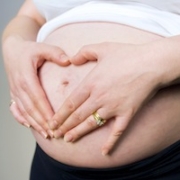The Savita case in Ireland: media reporting was muddled and misleading

At the same time that the Leveson Inquiry has reported it is beginning to emerge that the media reporting on the death of Savita Halappanavar was both misleading and muddled, strongly suggesting a journalistic agenda more focused on undermining Irish abortion laws than on reporting accurately on a tragic death.
It can hardly have escaped most people’s attention that Savita Halappanavar, an Indian woman in Ireland who was expecting a baby, begged for a termination when complications arose during her pregnancy. However she was denied one by hospital staff who allegedly said that ‘This is a Catholic country’. News outlets, tweeters, abortion advocates and demonstrators all over the world affirmed her husband’s claim that Savita would not have died had she only been given a termination.
Ireland’s restrictive abortion laws were accused of causing the death of Savita.
There are not quite the same media coverage or worldwide headlines now that major discrepancies in this story are coming to light. It seems that these original ‘facts’ are in some doubt and that the truth may well have been trampled on.
Evidence is emerging that:
- The original reporting of the story was muddled;
- There may have been no request for a termination after all;
- It appears that Savita most probably died of septicaemia in which case termination of pregnancy may well not have altered the fatal outcome;
- The case has little to do with the abortion laws after all;
- Abortion rights groups have hijacked the case, misled the public and exploited it to campaign for legalising abortion. The Irish Times has played a key part in this.
The reality is that we do not know the full facts in this sad case. Until the Inquiry set up to investigate the death reports, we should not follow the same example of the media and report as fact what we do not definitely know to be fact.
Nevertheless, that doesn’t mean we cannot highlight these emerging discrepancies (unlike the journalists) and resist the demands to dismantle Irish laws on abortion based on one muddled, misreported case.
Peter Saunders writing for the CMF blog outlines some of the issues around the case, such as the fact that Irish law and medical guidelines already allow for abortion to save the life of the mother, in cases like Savita’s. He also highlights Irelands exemplary maternal health record and extraordinarily low maternal mortality rate.
Interestingly, this is one claim that the Irish Times is now attempting to dismantle because, if true, it presents a ‘powerfully persuasive’ argument against changing the laws in Ireland.
As the Irish Times comments:
‘Ireland is the safest place in the world for a mother to have a baby. This claim is repeated endlessly – for the very good reason that, if true, it would be powerfully persuasive.’
Therefore the Irish Times sets out why this claim is factually wrong:
‘The figures on which it is based are extremely dubious. They come from a 2005 report, Maternal Mortality in 2005 estimates developed by WHO, Unicef, UNFPA and the World Bank. It does indeed show Ireland with the lowest rate of maternal death in the world at just one per 100,000 live births. This is a spectacularly good result – the average in the developed world is nine per 100,000.’
But clearly the Irish times consider that we should not believe the WHO, Unicef, UNFPA and World Bank and their ‘extremely dubious’ figures.
Instead, we are told to believe Dr Michael O’Hare of Daisy Hill hospital in Newry, who informed the ‘Medical Independent’ in 2010: ‘We believe that the situation is not as rosy as it would appear to be. In fact, we are certain that it is not as rosy.’ O’Hare, apparently, is ‘Chair of an all-island multidisciplinary working group established in 2007’, but that is all we are told about his group. On this informative, authoritative and trustworthy evidence the Irish Times feels able to confidently state that: ‘new, more accurate results should be available next year.’
I think perhaps we should stick for now with the WHO, Unicef, UNFPA and World Bank current maternal mortality figures, (which in fact come from 2010 data) which show that Ireland is indeed one of the safest places in the world for a mother to have a baby.
Moreover, Irelands maternal mortality rate compares very favourably with the UK, US and India:
- Britain – Maternal Mortality Rate is 2x higher than in Ireland
- United States – Maternal Mortality Rate is 3.5x higher than in Ireland
- India – Maternal Mortality Rate is 33x higher than in Ireland
It therefore seems particularly ironic that the India Times stated in a headline a few weeks ago that: ‘Ireland Murders Pregnant Indian Dentist!’
It was not just Indian journalists. The Guardian claimed that: ‘Savita Halappanavar ‘would still be alive if she had been treated in India‘.
It is striking that the misguided, biased and sometimes hysterical reporting in many sections of the media in the UK has come at the same time that Leveson has highlighted the need for maintaining fairness and balance in the media. Unfortunately, despite the original story beginning to unravel somewhat, the media will be unlikely to report on this case much more, now that they have had their headlines and used the opportunity to drive the pro-abortion agenda for legislative change in Ireland.
Now that the facts of the case are admitted as being muddled, I suspect neither the India Times or the Guardian will headline a new article with: ‘Ireland’s restrictive abortion laws save thousands of women and babies from death’. Or even perhaps: ‘Ireland is a far safer place than India to give birth’.












Leave a Reply
Want to join the discussion?Feel free to contribute!